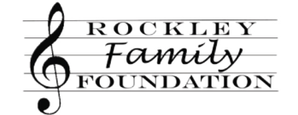When you first begin to learn the piano, you probably will not need to read notes and play at the same time. Starting with scales and simple songs allows a new player to learn their way around the piano and the keys. However, as your experience grows and longer songs are within reach, sheet music becomes a necessary part of the process. Here are some tips on learning to read music, focusing on piano sheet music.
The Structure of Sheet Music
The building block for all piano sheet music is the grand staff. The staff will have the treble clef, usually played by the right hand, on top and the bass clef, usually played by the left hand, on bottom. This organization looks like this:

These clefs organize all of the notes on a keyboard so you can see which hand should play which note at what time. The higher up you go on a clef, the higher up on the keyboard you have to move your hand to play that note. For example, the bottom line of the bass clef is a lower G. If you move all the way up to the 2nd-from-lowest line in the treble clef, it is also a G, just situated further right on the keyboard so it plays a higher pitch. A good indicator of the relative position of a note on a keyboard is the middle C. The middle C is usually denoted in sheet music as having a line through the note, like this:

If the middle C is the “middle” of the keyboard, then any note placed above the middle C is likely to be played by the right hand and any note placed below the middle C is likely to be played by the left hand.
Notes can be written on the lines of each clef or on the spaces between the lines. For example, the first line of the treble clef is an E, but the highest “space” of the treble clef is also an E, just higher up on the keyboard. When you first find piano sheet music, spend some time reading the notes on the page and finding them on the keyboard. This will help connect the activity of reading the piano sheet music with the activity of playing along with the music.
How Sheet Music Shows Timing
The other huge benefit that piano sheet music brings is timing. Sheet music has plenty of ways to show how long to play a note and how long to not play anything at all. The length of a note is often measured in quarters. Because there are often four counts in a measure, or portion, of music, quarter notes are a natural measuring stick. Quarter notes have their circles filled and a stem added on top of the circle. This image also shows a quarter rest, where you don’t play anything:

A half note is played twice as long as a quarter note because it uses half of the counts in a measure. Similarly, an eight note is played twice as long as a quarter notes because it is using eight of the counts in a measure. All of different note timings look something like this:

Once you have familiarized yourself with how these notes look, it becomes relatively easy to pace out what a piece of piano music might sound like. Consult a piano teacher or visit a local music store to find some great recommendations on beginner piano pieces that are fun and challenging. Learning how to read sheet music is a great building block to understanding any instrument.
Visit the Rockley Family Foundation website to learn more about the piano at https://www.rockleyfamilyfoundation.org/blog/ and visit https://www.rockleyfamilyfoundation.org/events/ to find an instrument event near you.
